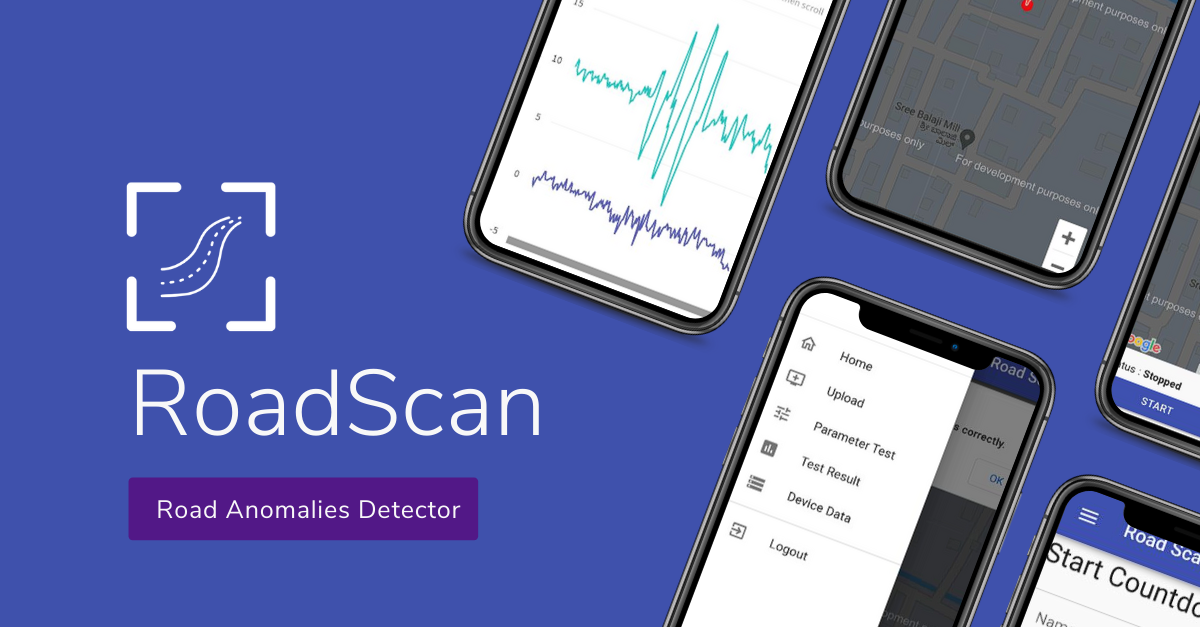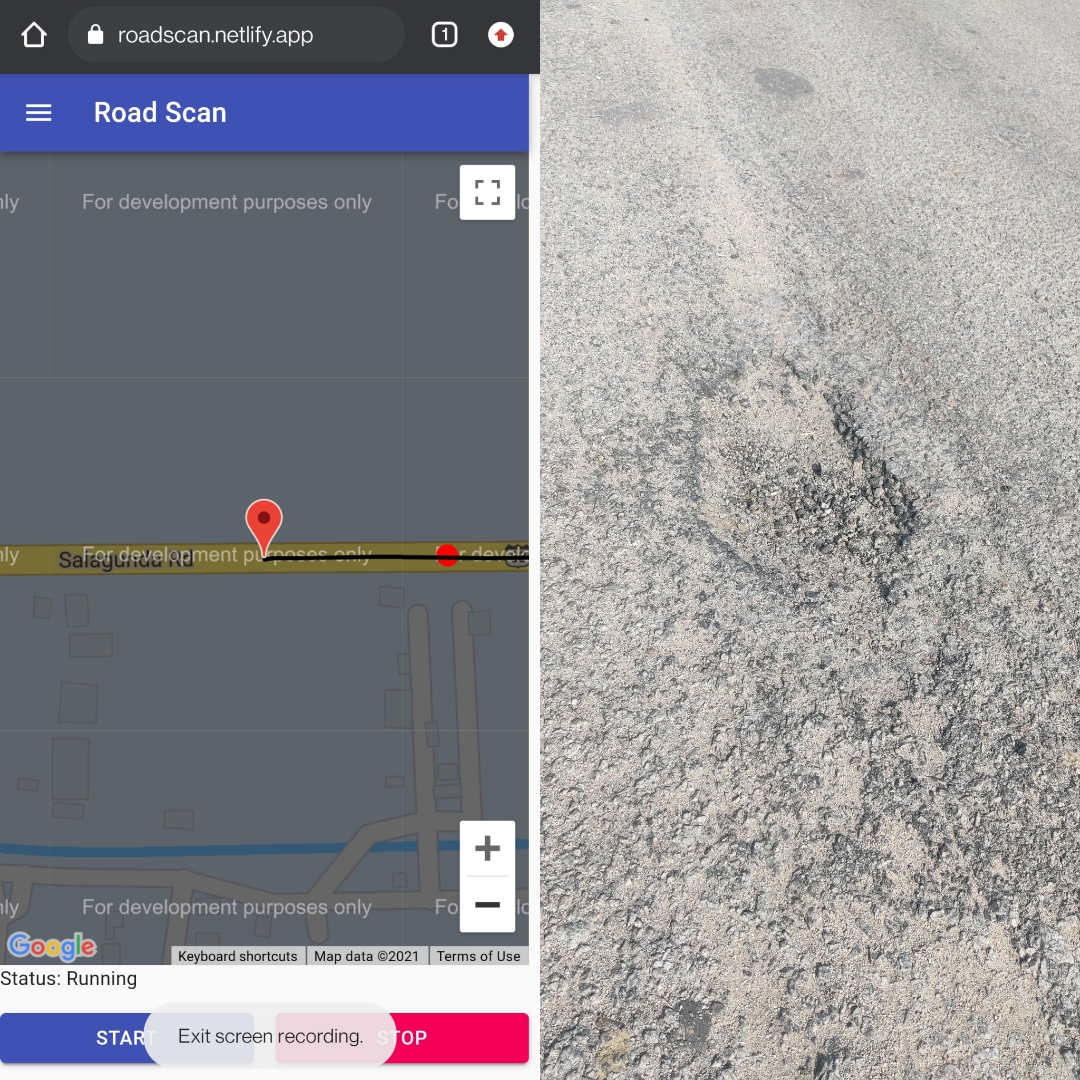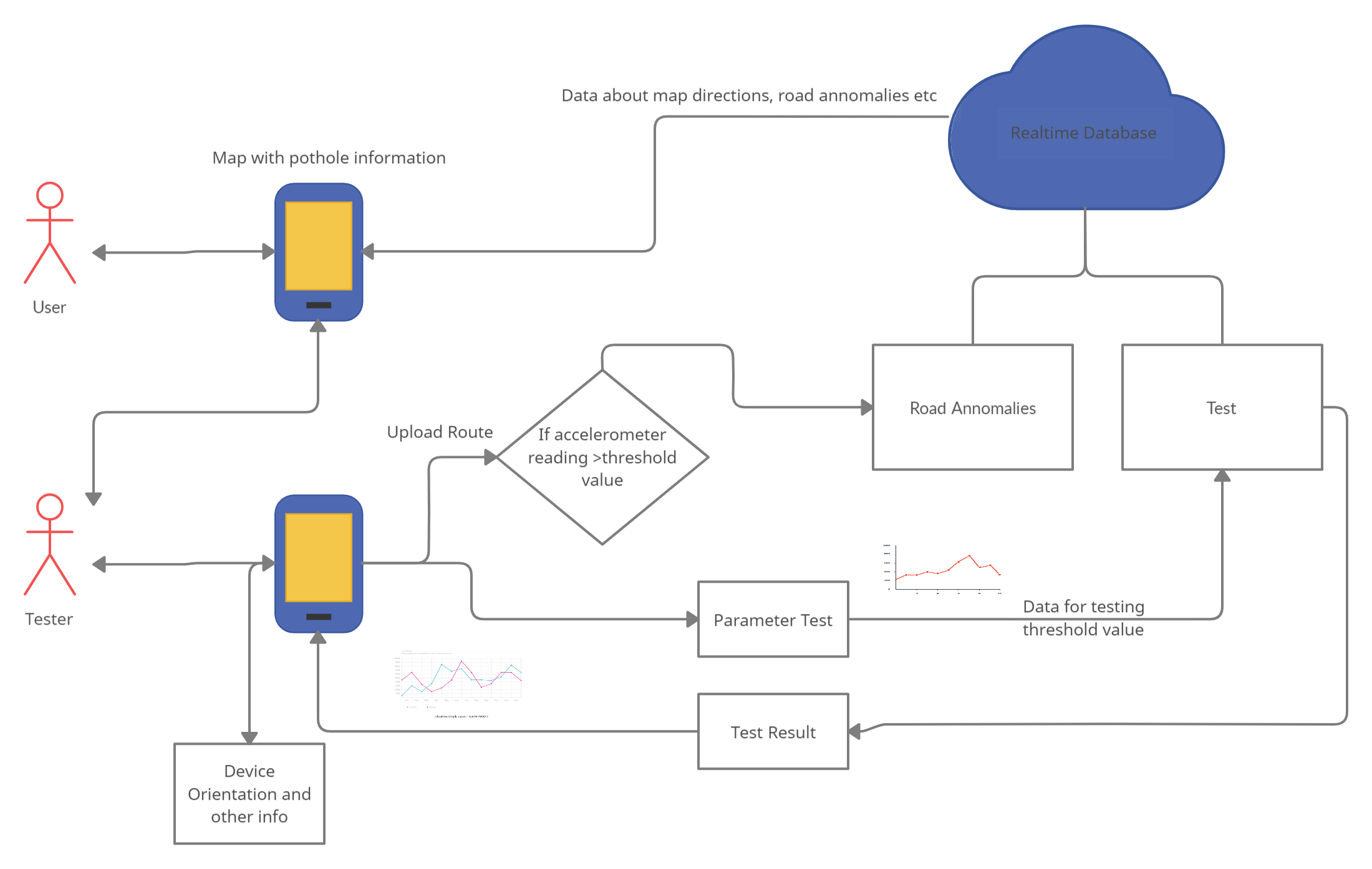Road anomalies detector is a web application which primarily detects the potholes using smartphone sensors and also helps people by notifying them about the occurrence of potholes ahead of time.
Working on a principle of moving averages and changes of acceleration, it helps the citizens to detect the presence of potholes on road ahead of time so that these potholes can be filled up in a timely manner and also helps them to avoid any damage that can be caused because of it.
It makes use of mobile phones with android operating system which have an in-built Accelerometer and GPS sensors. For the process of detection of potholes, the application uses the accelerometer readings to detect the presence of potholes. Using that information, it then calculates the precise location and updates the cloud data regarding the presence of potholes. This data can be used by people for safe travel or by authorities to rectify such anomalies on road.
- Pothole Alerts
- Pothole Testing and Updating
- Parameter Testing-Finding threshold
Client: Vite Js, easy-peasy, Material UI
Database: Firebase Realtime Database
Other Technologies: Generic Sensor APIs, Fusion Charts etc.
Clone the project
git clone https://link-to-projectGo to the project directory
cd my-projectInstall dependencies
npm installStart the server
npm run dev- Support to more vehicles
- Improved threshold detection algorithm
- Improved Map Functionality
- Login and Sign Up screen
- Landing page with all details about the app
- Different Algorithms to classify different anomalies like cluster gaps, drain pits, large and small potholes
[1] RoadSense: Smartphone Application to Estimate Road Conditions Using Accelerometer and Gyroscope.
[2] Real time pothole detection using Android smartphones with accelerometers
[3] Real Time Pothole Detection Using Android Smartphones with Accelerometers
[4] Humps and Pothole Detection and Alerting System for Safe Journey- Shubhada Vital Poojary1, Rashmi M2, Sudheer Shetty3
[5] Speed Bump Detection Using Accelerometric Features: A Genetic Algorithm Approach Jose M. Celaya-Padilla 1,*, Carlos E. Galván-Tejada 2 , F. E. LópezMonteagudo 2 , O. Alonso-González 3 , Arturo Moreno-Báez 2 , Antonio MartínezTorteya 4 , Jorge I. Galván-Tejada 2 , Jose G. Arceo-Olague 2 , Huizilopoztli LunaGarcía 2 and Hamurabi Gamboa-Rosales 2
For support, please email veerreshr@gmail.com.


